Understanding proper sock sizing is crucial for comfort and support. This guide provides a comprehensive overview of sock sizes, materials, and fit to help you make informed choices.
1.1 Importance of Proper Sock Fit
Proper sock fit is essential for comfort, support, and overall foot health. Ill-fitting socks can cause discomfort, blisters, or restricted circulation, while the right fit ensures optimal performance. Socks designed for specific activities, like hiking or sports, offer features such as cushioning or arch support, enhancing functionality. Moisture-wicking materials and breathable designs further improve comfort. Choosing the correct size and type ensures your feet stay dry and comfortable, making proper fit a critical factor in everyday wear and athletic performance.
1.2 Brief Overview of Sock Sizing
Sock sizing varies by region and brand, with standard charts available for men, women, and kids. Sizes often correspond to shoe sizes, with conversions like US, European, and UK measurements. For example, men’s sizes range from 3-5.5 to 12-15 in US sizes, while European sizes span 35-38 to 47-48. Women’s sizes typically range from 4-7 to 10.5. Leading brands like FITS, Darn Tough, and Adidas provide detailed charts, ensuring accurate fits for activities like sports or casual wear. Proper sizing ensures comfort, support, and performance.
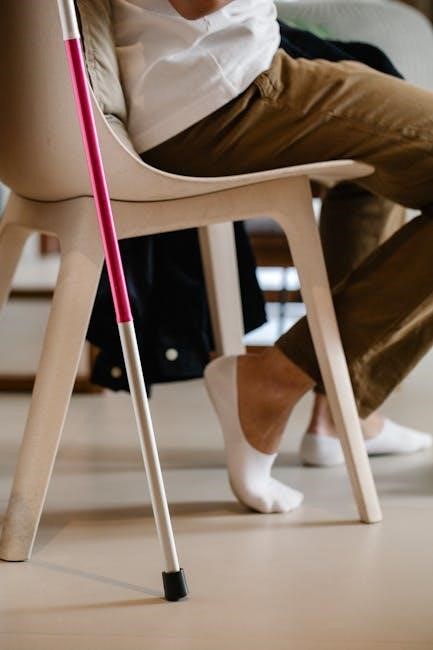
Understanding Sock Sizes
Sock sizes vary by region and brand, often aligning with shoe sizes. Standard charts help determine the right fit, ensuring comfort and performance for different activities.
2.1 Standard Sock Size Charts
Standard sock size charts categorize sizes based on shoe sizes, ensuring consistency across brands. They typically range from small to extra-large, correlating with foot length measurements. These charts help consumers choose the right fit for comfort and performance. By aligning sock sizes with shoe sizes, they simplify the selection process. However, variations exist between regions and brands, so checking specific charts is essential for accuracy. This system provides a reliable starting point for finding the ideal sock size.
2.2 Sock Size to Shoe Size Conversion
Sock sizes are often aligned with shoe sizes to simplify selection. For example, a men’s shoe size 8 typically corresponds to a medium sock size. This conversion helps ensure a consistent fit, as sock sizes are primarily based on foot length. However, factors like foot width and sock thickness can affect the final fit. Always refer to specific brand charts, as slight variations may exist. This method provides a practical starting point for matching socks to shoe sizes effectively.
Sock Size Charts for Men
Men’s sock sizes vary by region, with US, European, and UK charts offering specific size ranges. Foot length is the primary measurement for determining size. Knowing your shoe size helps estimate sock size, but slight variations exist between brands. Always refer to the brand’s chart for accurate fit.
3.1 US Men’s Sock Sizes
US men’s sock sizes typically range from 6-16, corresponding to shoe sizes. A size 6-8 fits shoe sizes 6 to 8, while larger sizes like 12-14 fit shoe sizes 12 to 14. Sock sizes may vary slightly by brand, so checking individual charts is recommended. Generally,Sock length increases with size, ensuring comfort and coverage. Foot length is the key measurement, but material thickness can influence fit. Always consider activity type, as sport socks may fit differently than casual ones.
3.2 European Men’s Sock Sizes
European men’s sock sizes typically range from 39 to 48, correlating with European shoe sizes. A size 39-41 fits smaller feet, while 45-48 accommodates larger ones. Sock length and foot coverage increase with size. Material thickness and activity type can influence fit, so sport socks may differ from casual ones. Always measure foot length for accuracy, as sizes can vary slightly by brand. Checking individual brand charts ensures the best fit, balancing comfort and performance for various needs and preferences.
3.3 UK Men’s Sock Sizes
UK men’s sock sizes typically range from 6 to 12, corresponding to foot lengths of approximately 23-30 cm. These sizes align closely with UK shoe sizes, ensuring a consistent fit. The sizing system is straightforward, with each size representing a specific foot length. However, sock thickness and material can affect the fit, so it’s essential to consider these factors. Always check brand-specific charts, as slight variations may occur. Proper measurement ensures comfort and performance, whether for casual or athletic use.

Sock Size Charts for Women
Women’s sock sizes typically range from 4 to 10 in UK sizes, corresponding to foot lengths of approximately 21-27 cm. Sizes vary by brand, ensuring a tailored fit for different foot shapes and preferences. Proper sizing enhances comfort and durability, making it essential to refer to specific charts for accurate measurements.
4.1 US Women’s Sock Sizes
US women’s sock sizes typically range from 4 to 10, corresponding to foot lengths of approximately 8 to 10 inches (20-25 cm). Sizes vary slightly between brands, but generally, a size 4 fits smaller feet, while size 10 accommodates larger ones. Proper fit is crucial for comfort and durability. Always check the brand’s size chart, as some may differ. Trying socks on ensures the best fit, especially since materials and stretch can affect sizing. Accurate sizing prevents blisters and ensures optimal performance for daily wear or sports.
4.2 European Women’s Sock Sizes
European women’s sock sizes typically range from 35 to 42, corresponding to foot lengths of approximately 22 to 26 cm. These sizes align with the European shoe size system, offering a standardized fit. Proper sizing ensures comfort and prevents issues like blisters. Always check the brand’s chart, as minor variations exist. Socks that fit well stay in place during activities, providing support and durability; Consider material thickness and elasticity when selecting your size for optimal comfort and performance.
4.3 UK Women’s Sock Sizes
UK women’s sock sizes generally range from 4 to 8, corresponding to foot lengths of approximately 21 to 25 cm. These sizes are often aligned with UK shoe sizes, ensuring a consistent fit. Proper sizing prevents discomfort and ensures optimal performance. Different brands may have slight variations, so checking the specific size chart is recommended. Socks that fit well provide support and durability, making them ideal for various activities. Consider trying them on if possible to ensure the best fit and comfort.

Sock Size Charts for Kids
Kids’ sock sizes vary by age, typically ranging from baby sizes (0-2 years) to youth sizes (12-16 years). Sizes often correlate with shoe sizes, ensuring a snug, comfortable fit for growing feet.
5.1 US Kids’ Sock Sizes
In the US, kids’ sock sizes typically range from 0-2 years (4-5 inches) up to 12-16 years (8-9 inches). Sizes correspond to shoe sizes, ensuring proper fit. Toddler sizes (4-7) cover 5-7 inches, while youth sizes (1-5) fit 7-9 inches. Socks are designed to accommodate growing feet, with elastic cuffs for comfort. Material thickness and activity type influence size choice, but standard charts provide a reliable guide for selecting the right fit.
5.2 European Kids’ Sock Sizes
In Europe, kids’ sock sizes range from 16 (infants) to 40 (teenagers), corresponding to foot lengths in centimeters. Sizes 16-20 fit infants (3-4 cm), while 24-28 suit toddlers (6-7 cm). Older children typically wear sizes 32-36 (8-9 cm), and preteens may need 38-40 (9-10 cm). European sizes are standardized but slight variations exist between brands. Always consider growth spurts and activity levels for the best fit. Checking brand-specific charts ensures accuracy, as sizing can differ slightly by country or manufacturer.
5.3 UK Kids’ Sock Sizes
UK kids’ sock sizes typically range from 0 (newborns) to 13 (older children), correlating with shoe sizes. Sizes 0-3 fit infants (0-12 months), while sizes 4-8 suit toddlers and young children (1-6 years). Older kids often wear sizes 9-13 (7-12 years). UK sizes align with foot length in centimeters, but slight variations exist between brands. Always consider growth spurts and activity levels for comfort. Checking specific brand charts ensures the best fit, as some may differ slightly from standard UK sizing guidelines.
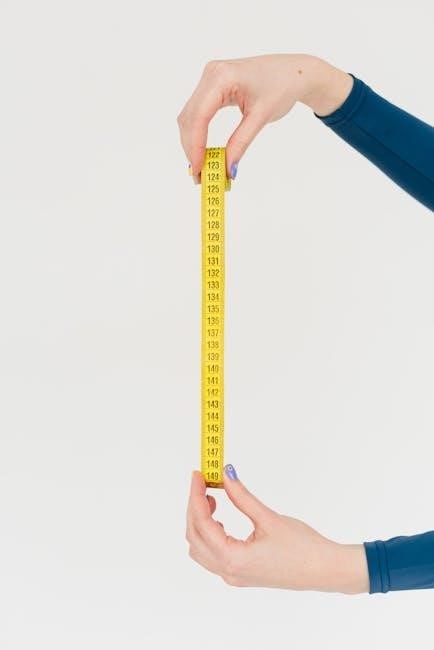
Popular Brand Size Charts
Popular brands offer size charts tailored to their designs, ensuring a perfect fit. Darn Tough, FITS, and Adidas provide detailed charts for accurate sizing.
6.1 FITS Sock Size Chart
FITS offers a detailed size chart to ensure optimal comfort and durability. Their sizes range from Small to XX-Large, catering to various foot shapes and sizes. The chart aligns with standard shoe sizes but also considers sock thickness and activity type. FITS emphasizes accurate foot measurement to match their sizing, ensuring a snug, supportive fit. Their chart is user-friendly, providing clear guidelines for men, women, and unisex styles, making it easy to find the perfect pair for any need.
6.2 Darn Tough Sock Size Chart
Darn Tough offers a comprehensive size chart to ensure a perfect fit. Their sizes range from Small to 3X-Large, catering to men, women, and unisex styles. The chart aligns with standard US shoe sizes but also considers foot length and activity type. Darn Tough emphasizes durability and comfort, with sizes designed to accommodate different sock thicknesses. Their chart includes clear guidelines for measuring foot length, ensuring a snug fit for casual, hiking, or sports activities. This ensures their socks meet the needs of various lifestyles and preferences.
6.3 Adidas Sock Size Chart
Adidas provides a detailed sock size chart tailored to different activities and preferences. Their sizes range from Small to 2X-Large, aligning with US shoe sizes. The chart is designed for both casual and sports socks, offering options like snug or relaxed fits. Adidas emphasizes moisture-wicking fabrics and cushioning for performance. The chart helps users find the right size based on foot length and activity type, ensuring comfort and durability. Popular collections like Superlight or Cushioned have specific size recommendations, making it easy to choose the perfect pair for any need.

How to Measure Your Foot for Sock Size
Stand barefoot, place weight evenly, and measure the longest part of your foot using a flexible tape or ruler for accurate sizing and fit.
7.1 Accurate Foot Measurement Techniques
For precise measurements, stand barefoot with weight evenly distributed. Use a flexible tape measure or ruler to measure the longest part of your foot, from the heel to the tip of the longest toe. Ensure the foot is flat on the ground and the tape is snug but not tight. Measure both feet, as they may differ slightly, and take the average. For best results, measure at the end of the day, as feet tend to swell slightly. This method ensures a comfortable and accurate sock fit.
7.2 Using a Brannock Device
A Brannock Device is a reliable tool for measuring foot length and width. Place your foot flat on the device, ensuring your heel aligns with the back. Slide the slider forward until it gently touches your longest toe. This provides precise measurements for both length and width. The device is commonly used in shoe stores but is equally useful for determining sock size. It offers a quick and accurate way to ensure a proper fit, catering to variations in foot shape and size.
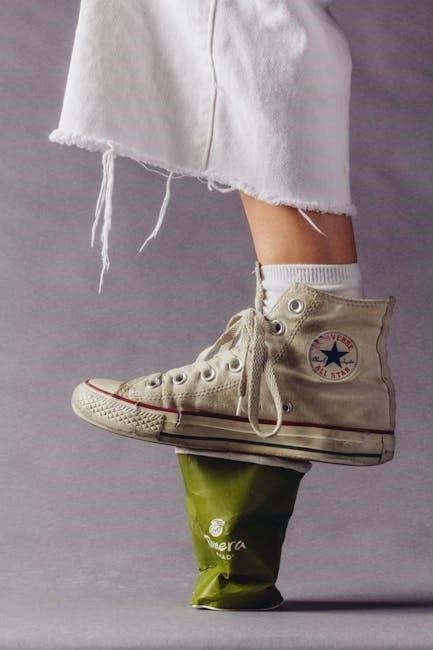
Factors Affecting Sock Size
Foot length, width, and shape, along with sock material, thickness, and activity type, influence the ideal sock size for comfort and performance.
8.1 Foot Length and Width
Foot length is the primary factor in determining sock size, as it ensures proper fit and comfort. Longer feet require larger sizes, while shorter feet need smaller ones. Foot width also plays a role, as wider feet may need a larger size to avoid tightness. Narrower feet might require a smaller size or a different style. Measuring both length and width ensures the best fit, preventing issues like blisters or restricted movement. Accurate measurements are key to selecting socks that provide optimal comfort and performance.
8.2 Sock Material and Thickness
Sock material and thickness significantly impact fit and comfort. Thicker socks, like wool or heavy athletic styles, may require a larger size to accommodate the added bulk. Thinner materials, such as cotton or synthetic blends, fit differently and may need a smaller size. Elasticity also plays a role, as some fabrics stretch more than others. The combination of material and thickness affects how the sock molds to the foot, making it essential to consider these factors when choosing the right size for optimal comfort and performance.
8.3 Activity Type (Sport, Casual, etc.)
The type of activity influences sock size selection. Sports and high-impact activities often require thicker, more supportive socks, which may need a larger size for comfort. Casual or everyday socks are typically thinner and fit more snugly, requiring a smaller size. The level of cushioning, compression, or breathability needed for specific activities also affects fit. Choosing the right size based on activity ensures optimal performance, comfort, and durability, preventing issues like blisters or restricted movement during use.
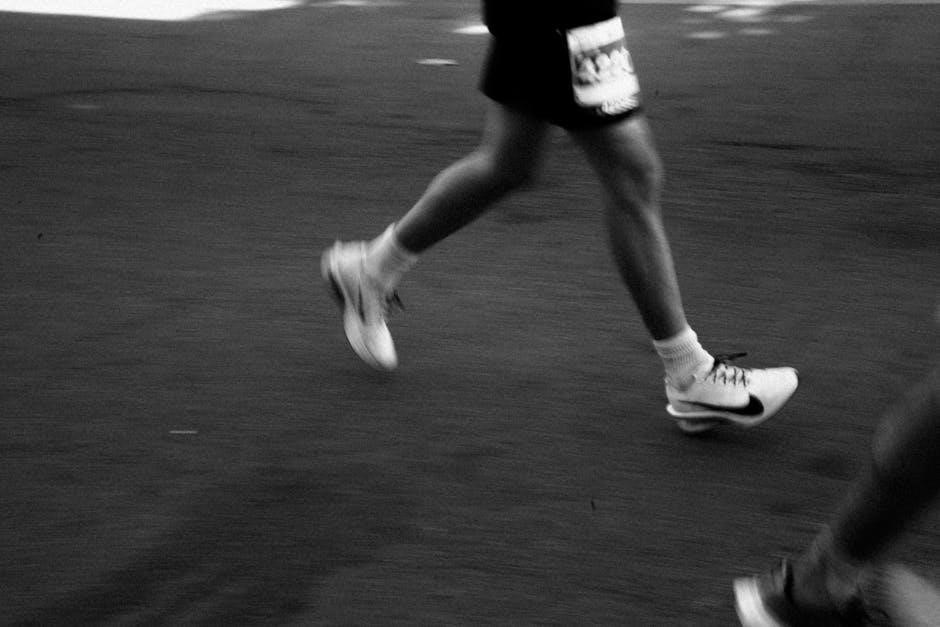
Common Mistakes in Choosing Sock Sizes
Common mistakes include ignoring proper fit, not checking size charts, and assuming all brands fit similarly. These oversights can lead to discomfort and poor performance.
9.1 Ignoring Foot Shape and Width
Many people overlook the importance of foot shape and width when selecting socks. Different foot shapes, such as narrow, medium, or wide, require specific sock sizes for comfort. Ignoring this can lead to tight or loose fits, causing discomfort and potential health issues like blisters or restricted circulation. Additionally, foot width often varies independently of length, so relying solely on length measurements can result in poor fit. Always consider both dimensions for optimal comfort and performance.
9.2 Not Considering Sock Material
Ignoring sock material when choosing sizes can lead to poor fit and discomfort. Different materials, such as cotton, wool, or synthetic blends, have varying stretch and thickness. Thicker materials like wool may require a larger size, while compression socks need precise fitting. Additionally, moisture-wicking fabrics for athletic activities may fit differently than casual socks. Failing to account for material properties can result in tight or loose socks, affecting performance and comfort. Always consider the fabric type when selecting sock sizes for optimal fit.

Tips for Buying the Right Sock Size
- Always try socks on if possible to ensure a proper fit.
- Refer to brand-specific size charts for accuracy.
- Consider the activity and comfort level needed.
10.1 Try Socks On If Possible
Trying socks on before purchasing ensures a perfect fit and comfort. Different brands may vary in sizing, and materials can feel differently on your skin. If shopping in-store, test the socks with the same type of footwear you plan to wear them with. This helps avoid discomfort or blisters. If online, check return policies in case the fit isn’t right. Proper fit enhances performance, especially for athletic or specific activities. Don’t hesitate to seek assistance from staff for sizing guidance.
10.2 Check Brand Size Charts
Always refer to the specific brand’s size chart before making a purchase, as sizing can vary between brands. Each brand may have slight differences in measurements or fits. Pay attention to the materials used, as thicker or thinner fabrics can affect how the socks fit. Double-checking the chart ensures you select the most comfortable and appropriate size for your needs. This step is crucial for avoiding socks that are too tight or too loose, which can cause discomfort or performance issues. Don’t assume universal sizing across brands.
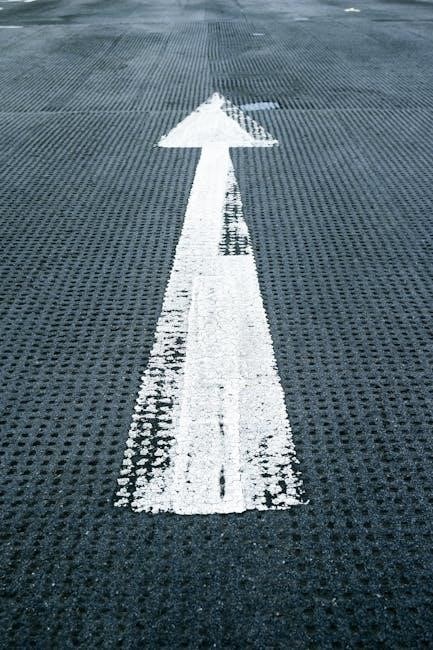
The Future of Sock Sizing
The future of sock sizing lies in innovative technologies and personalized fits, enhancing comfort and performance for all users.
11.1 Technology in Sock Sizing
Technology is revolutionizing sock sizing through 3D foot scanning, AI-driven fit recommendations, and smart materials. These innovations enable precise measurements, reducing sizing errors and enhancing comfort. Apps now allow users to scan their feet at home, providing accurate size recommendations. Additionally, some brands are integrating sensors into socks to monitor fit and performance. Such advancements promise a future where ill-fitting socks are a rarity, catering to diverse foot shapes and activities with unparalleled accuracy and personalization.
11.2 Customizable Socks
Customizable socks are becoming increasingly popular, offering tailored fit and comfort. Brands now allow customers to choose materials, lengths, and cushioning levels based on personal preferences. Online tools enable precise size adjustments, ensuring a perfect fit for unique foot shapes. Additionally, some companies offer eco-friendly options, letting users select sustainable materials. Customizable socks cater to specific activities, such as hiking or athletics, enhancing performance. This trend reflects a growing demand for personalized apparel, making socks more functional and comfortable for individuals with diverse needs.
Understanding sock sizing ensures comfort and confidence. Proper fit enhances performance and satisfaction. This guide provides essential insights to help you make informed choices for your footwear needs.
12.1 Final Thoughts on Sock Size Guide
12.2 Encouragement to Use the Guide
With this comprehensive guide, you now have the tools to find your perfect sock size effortlessly. Say goodbye to discomfort and hello to confidence with every step. Whether shopping online or in-store, this guide empowers you to make informed decisions. Don’t let ill-fitting socks hold you back—use this resource to ensure comfort, support, and style. Take the guesswork out of sizing and embrace the ease of finding your ideal fit. Your feet deserve the best, and this guide helps you achieve just that!

